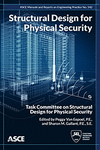Chapter 1
Physical Security Concepts, Threats, Vulnerability, and Risk
Publication: Structural Design for Physical Security: State of the Practice (MOP 142)
Abstract
This chapter is intended to introduce the reader to physical security concepts for structures, existing physical security criteria, and the risk management process as it pertains to structures. The typical layers of physical security in the design process are described. A security specialist typically performs risk and vulnerability assessments, works with the project stakeholders to develop risk-based, project specific design requirements, and develops operational and physical security measures to mitigate risks to an acceptable level. The roles of security specialists with demonstrated experience in risk assessment and management, electronic security, physical security design are discussed, An overview is given of existing physical security criteria provided by United States government agencies and professional organizations that may be applicable or adapted to a wide range of building facilities.
Get full access to this article
View all available purchase options and get full access to this chapter.
References
ASCE. 2011. Blast protection of buildings. ASCE/SEI 59-11. Reston, VA: ASCE.
DoD (US Department of Defense). 2008. Security engineering facilities planning manual. UFC 4-020-01. Washington, DC: DoD.
DoD. 2011. Guidelines for the design of passive vehicle barriers for implementation at DoD facilities. Omaha, NE: US Army Corps of Engineers, Protective Design Center.
DoD. 2009. Selection and application of vehicle barriers. UFC 4-022-02. Washington, DC: DoD.
DoD. 2020. Minimum antiterrorism standards for buildings. UFC 04-010-01. Washington, DC: DoD.
FEMA. 2003. Reference manual to mitigate terrorist attacks against buildings. FEMA 426. Washington, DC: FEMA.
FEMA. 2005. Risk assessment: A how-to guide to mitigate potential terrorist attacks against buildings. FEMA 452. Washington, DC: FEMA.
FEMA. 2012. Primer to design safe school projects in case of terrorist attacks and school shootings. FEMA 428. Washington, DC: FEMA.
FEMA. 2014. IS-156: Building design for homeland security for continuity of operations. Washington, DC: FEMA.
FEMA/NCPC (Federal Emergency Management Agency/National Crime Prevention Council). 2003. Crime prevention through environmental design guidebook. Washington, DC: FEMA.
FHWA (Federal Highways Administration). 2017. Bridge security design manual, infrastructure office of bridges and structures. FHWA-HIF-17-032. Washington, DC: FHWA.
GSA (General Services Administration). 2005. Protective design and security implementation guidelines. Washington, DC: GSA.
ISC (Interagency Security Committee). 2016. The risk management process for federal facilities: An interagency security committee standard. 2nd ed. Washington, DC: ISC.
ISC. 2016. The design-basis threat (U), an interagency security committee report. 10th ed. Washington, DC: ISC.
NCHRP (National Cooperative Highway Research Program). 2010. Blast-resistant highway bridges: Design and detailing guidelines. Rep. No. 645. Washington, DC: Transportation Research Board.
Ray, J. C. 2007. “Risk-based prioritization of terrorist threat mitigation measures on bridges.” J. Bridge Eng. 12 (2): 140–146.
TSA (Transportation Security Administration). 2006. Recommended security guidelines for airport planning, design and construction. Washington, DC: TSA.
VA (US Department of Veterans Affairs). 2020. Physical security and resiliency design manual. Washington, DC: VA.
Information & Authors
Information
Published In
Structural Design for Physical Security: State of the Practice (MOP 142)
Pages: 1 - 28
Editors: Peggy Van Eepoel https://orcid.org/0000-0002-2594-7255 and Sharon M. Gallant https://orcid.org/0000-0002-4261-7661
ISBN (Print): 978-0-7844-1549-8
ISBN (Online): 978-0-7844-8268-1
Copyright
© 2021 American Society of Civil Engineers.
History
Published online: Jun 8, 2021
ASCE Technical Topics:
- Aging (material)
- Building design
- Buildings
- Business management
- Construction engineering
- Construction management
- Design (by type)
- Deterioration
- Disaster risk management
- Engineering fundamentals
- Existing buildings
- Government
- Materials characterization
- Materials engineering
- Mitigation and remediation
- Organizations
- Practice and Profession
- Project management
- Risk management
- State government
- Structural design
- Structural engineering
- Structural safety
- Structures (by type)
Authors
Metrics & Citations
Metrics
Citations
Download citation
If you have the appropriate software installed, you can download article citation data to the citation manager of your choice. Simply select your manager software from the list below and click Download.
